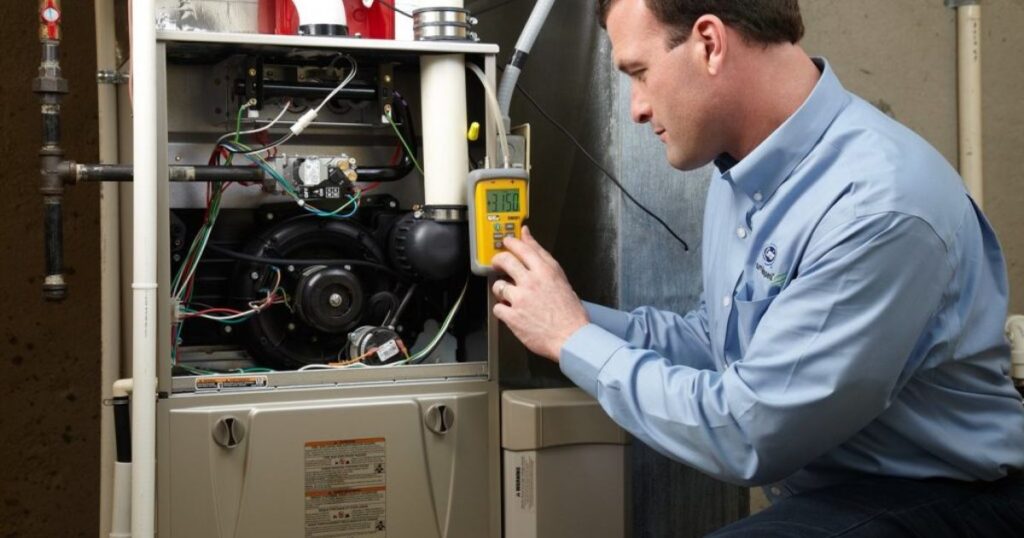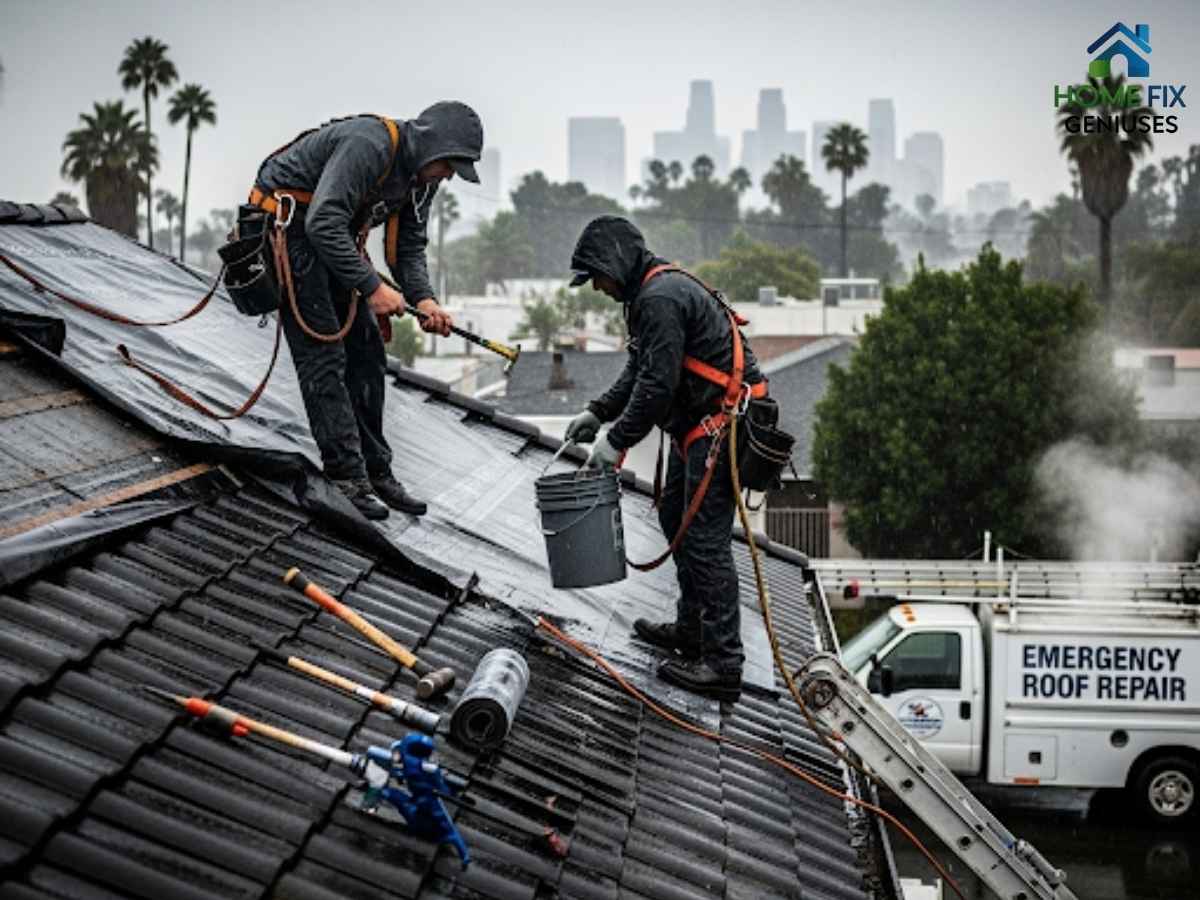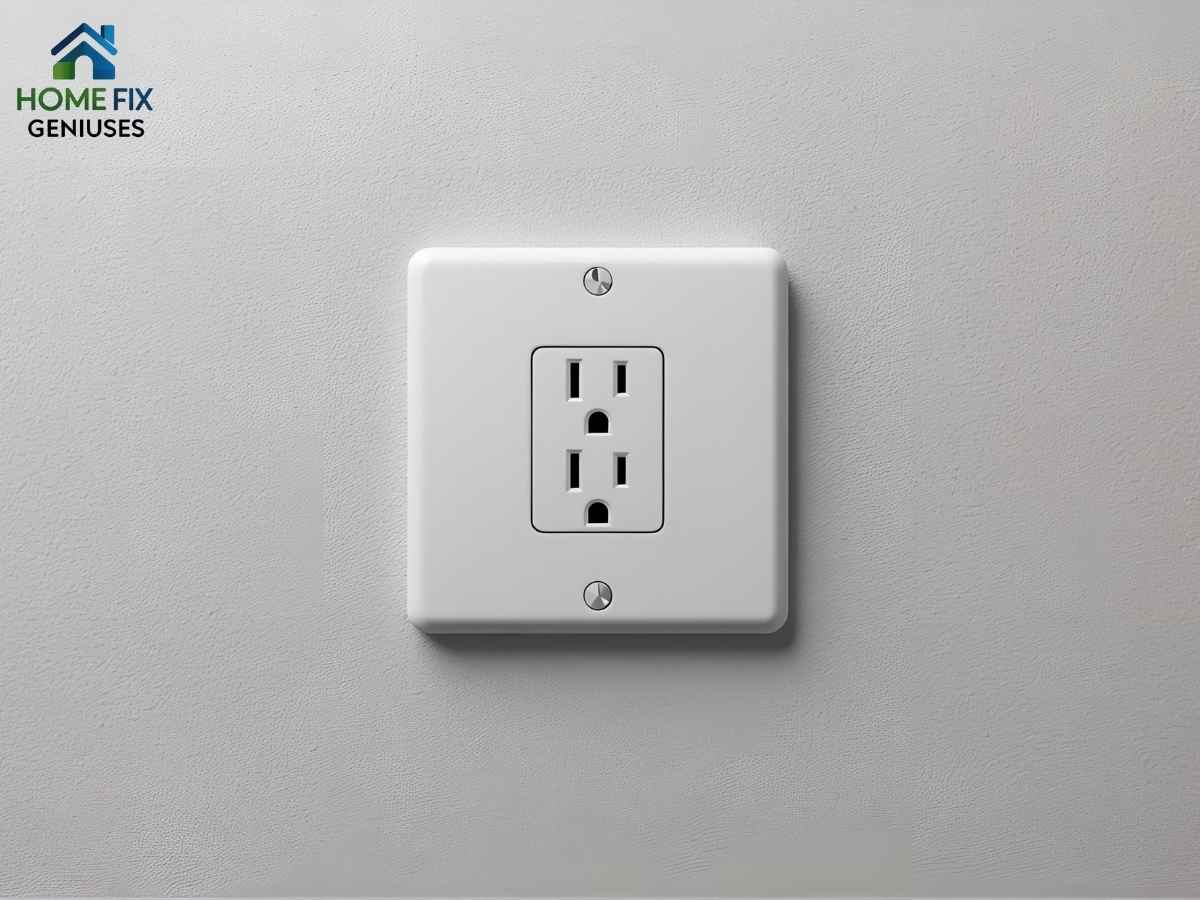When October temperatures dip into the 40s in neighborhoods like Silver Lake or Pasadena starts seeing those unexpected chilly mornings, Los Angeles homeowners suddenly remember their heating systems exist. After months of dormancy, your furnace needs attention before winter arrives. Professional furnace repair and winter preparation in Los Angeles isn’t just maintenance—it’s essential for safety, efficiency, and avoiding those costly midnight emergency calls.
Why Los Angeles Homes Need Winter Furnace Preparation
Los Angeles experiences unique heating challenges that many residents underestimate. While we don’t face harsh blizzards, winter nights regularly drop into the 40s and low 50s across the basin. Downtown LA sees average December lows of 48°F, while areas like Woodland Hills and Lancaster can dip into the 30s. These temperature swings catch unprepared heating systems off guard.
The Mediterranean climate creates another challenge—humidity fluctuations stress furnace components during seasonal transitions. Salt air from the Pacific corrodes metal parts in coastal areas like Manhattan Beach and Santa Monica. Meanwhile, inland valleys like the San Fernando Valley experience greater temperature extremes that strain heating equipment.
Most LA homes use forced-air gas furnaces that sit unused for 8-9 months annually. This extended dormancy allows dust accumulation, component degradation, and pilot light issues to develop unnoticed. When December arrives and you need heat immediately, a neglected system often fails at the worst possible moment.
Essential Furnace Maintenance Tasks for Los Angeles Homes
Filter replacement stands as the most critical winter prep task. Los Angeles air quality varies dramatically by neighborhood—areas near freeways like those in Hollywood or Downtown collect more particulates, while coastal communities deal with salt air and marine layer moisture. Replace standard filters every 1-3 months, but homes near high-traffic corridors may need monthly changes.
Thermostat calibration prevents energy waste and temperature inconsistencies. Test your thermostat by setting it 5 degrees above current temperature. The system should activate within minutes and deliver warm air. If response is sluggish or temperatures don’t match settings, calibration or replacement may be needed. Smart thermostats offer significant energy savings in LA’s variable climate.
Professional burner cleaning and inspection ensures safe, efficient operation. Gas burners accumulate dust and debris during dormancy, creating incomplete combustion that wastes energy and produces carbon monoxide. Dirty burners show yellow or orange flames instead of clean blue ones. Only licensed technicians should perform this critical safety check.
Heat exchanger inspection protects your family from carbon monoxide poisoning. Cracked heat exchangers can leak deadly CO gas into your home’s air supply. This invisible, odorless threat requires professional detection equipment. Coastal homes face increased risk due to salt air corrosion accelerating metal deterioration.
Real Los Angeles Case Studies
Case Study 1: Brentwood Home’s Close Call
Sarah Martinez owned a 1980s ranch home near the Getty Center in Brentwood (ZIP 90049). Last November, her family noticed intermittent heating and strange odors when the furnace ran. Initially dismissing it as normal “first use” smells, they nearly faced disaster when a professional inspection revealed a cracked heat exchanger leaking carbon monoxide. The repair cost $2,800, but the technician explained that without immediate attention, her family faced serious health risks. The ocean breeze and salt air had accelerated corrosion in the 40-year-old unit.
Case Study 2: North Hollywood Efficiency Upgrade
Roberto Chen’s 1950s bungalow in North Hollywood (ZIP 91601) struggled with uneven heating—bedrooms stayed cold while the living room overheated. His monthly winter LADWP bills reached $300 despite modest usage. A comprehensive furnace tune-up revealed blocked ducts, a dirty blower motor, and an improperly calibrated thermostat. After professional cleaning, duct sealing, and thermostat replacement, his heating bills dropped to $150 monthly while maintaining consistent comfort throughout the home.
Case Study 3: Woodland Hills System Failure Prevention
The Johnson family’s Spanish colonial in Woodland Hills (ZIP 91364) experienced complete furnace failure during January’s coldest week when temperatures dropped to 35°F. Emergency repair on a weekend cost $450 just for the service call, plus $600 for a replacement ignitor that could have been identified during routine maintenance. The technician found multiple issues that developed over years of neglect: clogged filters, corroded electrical connections, and a failing blower motor. An annual $200 maintenance visit would have prevented this $1,050 emergency expense.
Top 3 Los Angeles Furnace Service Providers
1. Mike Diamond Plumbing & HVAC
With over 50 years serving Los Angeles, Mike Diamond offers 24/7 emergency heating services and comprehensive furnace maintenance. Their technicians hold NATE certification and maintain fully stocked trucks for efficient repairs. They provide transparent pricing, financing options, and serve all LA neighborhoods from Malibu to Pasadena. Their reputation for showing up fast and completing repairs correctly the first time makes them a top choice for reliability.
Website: mikediamondservices.com
2. Affordable Heating and Air
This woman-owned, local business maintains A+ BBB ratings and 5-star reviews across Google and Yelp. They specialize in LA’s unique HVAC challenges, offering energy-efficient solutions for the region’s climate. Their C-20 licensed, bonded, and insured technicians provide extended hours and eco-friendly options. They excel at addressing air quality concerns and energy efficiency improvements specific to Los Angeles homes.
Website: affordableairla.com
3. NEXGEN Air and Plumbing
A Google Certified family-operated company serving Los Angeles County with comprehensive HVAC services. They offer industry-leading warranties and background-checked technicians. NEXGEN provides specialized services including duct installation, air quality assessments, and insulation services—particularly valuable for older LA homes. Their $68 tune-up special makes professional maintenance accessible for budget-conscious homeowners.
Website: nexgenairandplumbing.com

Los Angeles-Specific Heating Challenges
Wildfire smoke creates unique filter demands across LA neighborhoods. During fire season, standard filters quickly become overwhelmed by ash and particulates. Homes in foothill areas like La Cañada Flintridge or Altadena need high-efficiency filters and more frequent changes when smoke impacts air quality.
Seismic activity affects furnace installations throughout the region. Earthquake safety requirements mandate specific mounting and gas line connections for heating equipment. Professional inspections verify these safety measures remain intact, especially important for older installations that may not meet current seismic codes.
Energy efficiency regulations continue evolving under California’s Title 24 standards. New installations must meet strict SEER ratings and efficiency requirements. LADWP offers rebates for high-efficiency equipment upgrades, but proper installation and maintenance are essential for realizing these benefits.
Coastal corrosion accelerates component wear in beach communities from Venice to Manhattan Beach. Salt air attacks metal components, requiring more frequent inspections and protective treatments. Furnaces in these areas often need replacement parts earlier than inland counterparts.
Utility Resources and Permits
Los Angeles Department of Water and Power (LADWP) provides energy efficiency rebates and conservation programs for residential heating systems. Their website offers bill payment options, service connection information, and emergency contact numbers. LADWP serves over 4 million residents across LA with reliable, low-cost electricity that powers most home heating systems.
Los Angeles Department of Building and Safety (LADBS) requires permits for most furnace installations and major repairs. Mechanical HVAC permits ensure compliance with safety codes and proper installation procedures. Professional contractors typically handle permit applications, but homeowners should verify permits are obtained to avoid fines and insurance complications.
Los Angeles County Building and Safety governs unincorporated areas and provides additional permitting requirements for heating system work. Their regulations ensure safety standards and code compliance across all residential installations.
Advanced Winter Preparation Strategies
Ductwork inspection and sealing prevents energy loss common in LA’s older homes. Many residences built before 1980 have ductwork with significant air leaks that waste heated air in attics or crawl spaces. Professional duct testing and sealing can improve efficiency by 20-40%, reducing winter heating costs substantially.
Zone control systems optimize comfort in LA’s diverse architectural styles. Ranch homes, split-levels, and multi-story houses often experience uneven heating. Zoned systems with multiple thermostats allow precise temperature control in different areas, reducing energy waste and improving comfort.
Air quality improvements address LA’s pollution concerns. Whole-house air purifiers integrated with furnace systems remove pollutants, allergens, and wildfire smoke. HEPA filtration systems provide superior protection compared to standard furnace filters, particularly important for families with respiratory sensitivities.
Smart thermostat integration maximizes efficiency in LA’s variable climate. Programmable schedules accommodate work patterns while learning algorithms adjust to weather changes automatically. Many models integrate with LADWP’s time-of-use rates, running heating systems during lower-cost periods.
Professional vs. DIY Maintenance
Safety inspections require professional expertise due to carbon monoxide and gas leak risks. Licensed technicians carry specialized detection equipment and understand complex safety systems. Attempting DIY repairs on gas components violates building codes and creates serious safety hazards.
Homeowner maintenance tasks include filter changes, thermostat battery replacement, and keeping furnace areas clear. Visual inspections can identify obvious problems like strange odors, unusual noises, or poor airflow that warrant professional attention.
Professional maintenance provides comprehensive system evaluation including electrical connections, gas pressure testing, heat exchanger inspection, and efficiency measurements. Trained technicians identify developing problems before they cause failures or safety hazards.
Cost Considerations and Energy Savings
Annual maintenance costs range from $150-300 depending on system complexity and service provider. This investment typically prevents 85% of potential repairs while maintaining peak efficiency throughout winter months.
Energy savings from proper maintenance can reduce heating bills by 15-25% annually. For average LA homes spending $200-400 monthly on winter heating, maintenance pays for itself through reduced energy consumption.
Emergency repair costs during peak winter demand often exceed $500-1,000 including weekend and holiday service charges. Preventing these expenses through proactive maintenance provides significant financial benefits.
Utility rebates and incentives through LADWP and California programs offset upgrade costs for high-efficiency equipment. Professional maintenance ensures systems meet rebate requirements and perform at rated efficiency levels.
Timing Your Winter Preparation
October represents the optimal maintenance window before heating demand increases. Scheduling service during this period ensures availability and prevents delays when colder weather arrives unexpectedly.
Early maintenance appointments cost less than emergency calls and allow thorough inspections without time pressure. Service providers often offer seasonal specials during slower periods.
System testing before peak demand identifies problems while parts remain readily available. Waiting until December often means longer repair delays due to increased service calls and parts shortages.
Taking proactive steps now protects your family’s comfort and safety while avoiding expensive emergency repairs when Los Angeles winter arrives. Professional furnace maintenance isn’t just preventive care—it’s essential insurance against heating system failures during the coldest nights of the year.
Frequently Asked Questions
Q: How often should I schedule furnace maintenance in Los Angeles’ mild climate?
A: Even in LA’s moderate climate, annual furnace maintenance remains essential. Your heating system works hard during those surprisingly cold nights throughout winter, and without regular care, it loses approximately 5% efficiency each year. This efficiency loss translates directly into higher LADWP bills and increased breakdown risk. Professional maintenance prevents 85% of furnace repairs and ensures critical safety components like heat exchangers and gas connections remain secure. The mild climate actually creates unique challenges—extended dormancy periods allow dust and debris to accumulate, while coastal salt air accelerates corrosion in metal components. Annual service keeps your system ready for those unexpected cold snaps that catch many LA homeowners off guard.
Q: What specific furnace problems are common in Los Angeles due to our climate and air quality?
A: Los Angeles furnaces face distinct challenges from wildfire smoke, marine salt air, and earthquake activity. Coastal homes from Venice to Malibu experience accelerated corrosion in heat exchangers and burner components due to salt air exposure. Inland areas deal with heavy dust and smog that clogs filters more quickly than in other regions. During fire season, ash and particulates overwhelm standard filters, requiring high-efficiency alternatives and frequent changes. Seismic activity can loosen gas connections and mounting hardware over time, creating safety hazards. The extended heating dormancy period—8 to 9 months annually—allows pilot lights to fail and ignition systems to malfunction. Urban air pollution also creates more acidic condensation that corrodes metal components faster than in cleaner environments.
Q: Do I need permits for furnace repair or replacement in Los Angeles?
A: Yes, most furnace repairs and all replacements require permits from either Los Angeles Department of Building and Safety (LADBS) for city areas or LA County Building and Safety for unincorporated regions. Mechanical HVAC permits ensure work meets safety codes and proper installation standards. Your contractor should handle permit applications—be wary of any company suggesting you skip permits, as unpermitted work can result in double fees, fines up to $5,000, and insurance complications. Permitted work also protects your home’s resale value and ensures compliance with California’s strict energy efficiency standards. The permit process typically takes 1-3 weeks for standard repairs and includes required inspections to verify safe operation.
Q: How much should I budget for furnace maintenance and potential repairs in LA?
A: Annual maintenance costs range from $150-300 depending on your system and service provider, with many companies offering seasonal specials during October and November. This investment typically saves 15-25% on heating bills while preventing costly emergency repairs. Factor in filter replacements every 1-3 months at $20-40 each, more frequently if you live near freeways or during wildfire season. Emergency repairs during peak winter demand often cost $500-1,000 including weekend charges, while major component replacements like heat exchangers can reach $2,000-4,000. However, LADWP offers rebates for high-efficiency equipment upgrades, and many service providers offer financing options to spread costs over time.
Q: When should I replace my furnace instead of continuing repairs, and what are the best options for LA homes?
A: Consider replacement if your furnace is over 15-20 years old, requires frequent repairs, or shows efficiency decline despite maintenance. Rising LADWP bills combined with inconsistent heating often signal replacement time. For LA’s climate, high-efficiency gas furnaces work well in most areas, while heat pumps excel in coastal zones with milder temperature variations. Variable-speed blowers provide better air circulation for LA’s architectural styles, and smart thermostats maximize efficiency during our temperature swings. Coastal homes should prioritize corrosion-resistant materials, while inland properties benefit from enhanced filtration systems for air quality. Professional load calculations ensure proper sizing for your home’s layout and insulation levels. Energy Star certified units qualify for utility rebates, making efficiency upgrades more affordable while reducing long-term operating costs.


